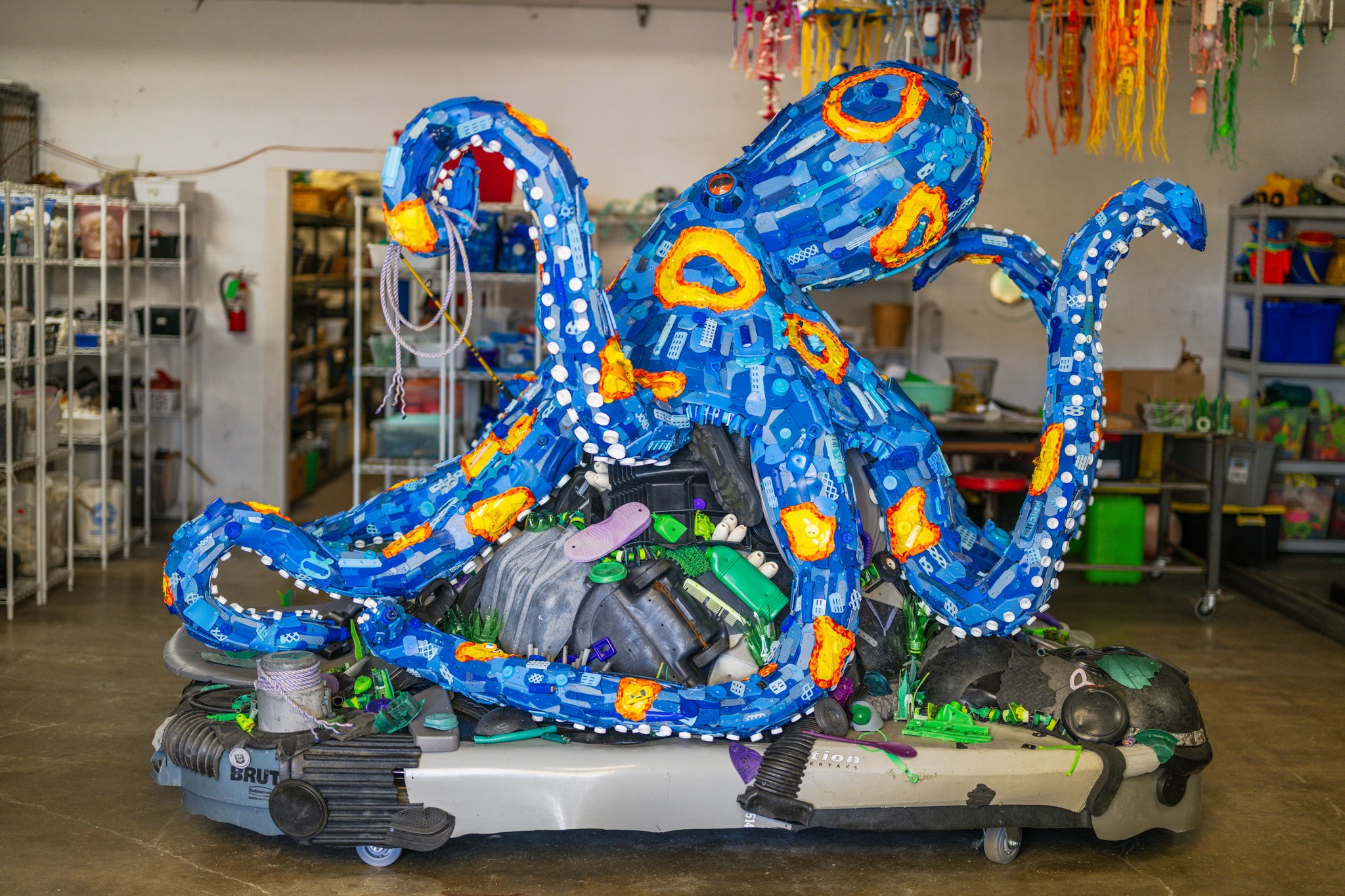- Overview of Washed Ashore’s mission and its impact on wildlife conservation.
- Details about the blue-ringed octopus and its ecological significance.
- Importance of sculptures in raising awareness about marine pollution.
- Insights into the collaboration between Washed Ashore and the Oregon Coast Aquarium.
- Educational and community engagement initiatives related to the exhibit.
The introduction of Udo, the blue-ringed octopus sculpture, marks an exciting moment for both Washed Ashore and the Oregon Coast Aquarium. Washed Ashore is an organization dedicated to crafting art from marine debris to educate the public and promote change. Their mission is crucial in today’s efforts to combat pollution and protect marine life. By transforming trash into art, the organization highlights the pressing issues of marine debris and its devastating effects on ocean ecosystems.
The blue-ringed octopus, chosen for this latest sculpture, serves as a poignant symbol. This creature, while small, is one of the ocean’s most enigmatic organisms due to its vibrant coloration and potent venom. Found in the Pacific and Indian Oceans, it has gained notoriety not just for its beauty but also for its dangerous bite. The presence of this species in art at the Oregon Coast Aquarium provides an opportunity to discuss the delicate balance of marine ecosystems and the role of each organism within them.
Washed Ashore’s sculptures are not merely art; they are potent tools for change. Each piece is constructed from plastics and other materials collected from beaches, effectively removing them from the environment. This process not only aids in cleaning our shores but also sparks conversations around consumer waste, recycling, and wildlife conservation. By showcasing a tangible solution to the problem of marine debris, Washed Ashore educates the public, encouraging us to rethink our habits and the impact of pollution on the planet.
The collaboration with the Oregon Coast Aquarium amplifies the reach and influence of these efforts. The aquarium, renowned for its focus on education and conservation, provides an ideal setting for such a display. Visitors to the aquarium are offered a unique opportunity to engage with this art and its underlying message. The positioning of Udo alongside other Washed Ashore pieces allows for a comprehensive viewing experience, tying art, science, and conservation together.
Beyond the visual impact, these exhibits stimulate educational programs that target a variety of audiences. School groups, families, and individuals alike can engage in workshops and presentations that explore the intersection of art, science, and environmental stewardship. By participating in these educational initiatives, visitors can deepen their understanding of human impacts on marine wildlife and discover actionable steps they can take in their daily lives to support conservation efforts.
In sum, the introduction of Udo at the Oregon Coast Aquarium is a multifaceted endeavor. It serves not only as a captivating piece of art but also as a beacon for conservation and education. This initiative underscores the importance of collaboration between artists and scientists in tackling environmental challenges. As visitors walk through the exhibit, they are invited to reflect on their own relationship with the environment and consider the legacy they will leave for future generations. The story of Udo at the Washed Ashore exhibit is one of transformation—turning debris into beauty, ignorance into knowledge, and complacency into action.
*****
Source Description
The results are in! Following a close vote, Washed Ashore’s newest sculpture has a name: Udo! The blue-ringed octopus makes its debut at the Oregon Coast Aquarium alongside the Washed Ashore exhibit on May 17.
Learn more about the upcoming exhibit at aquarium.org/washed-ashore (link in bio!) 🌊


